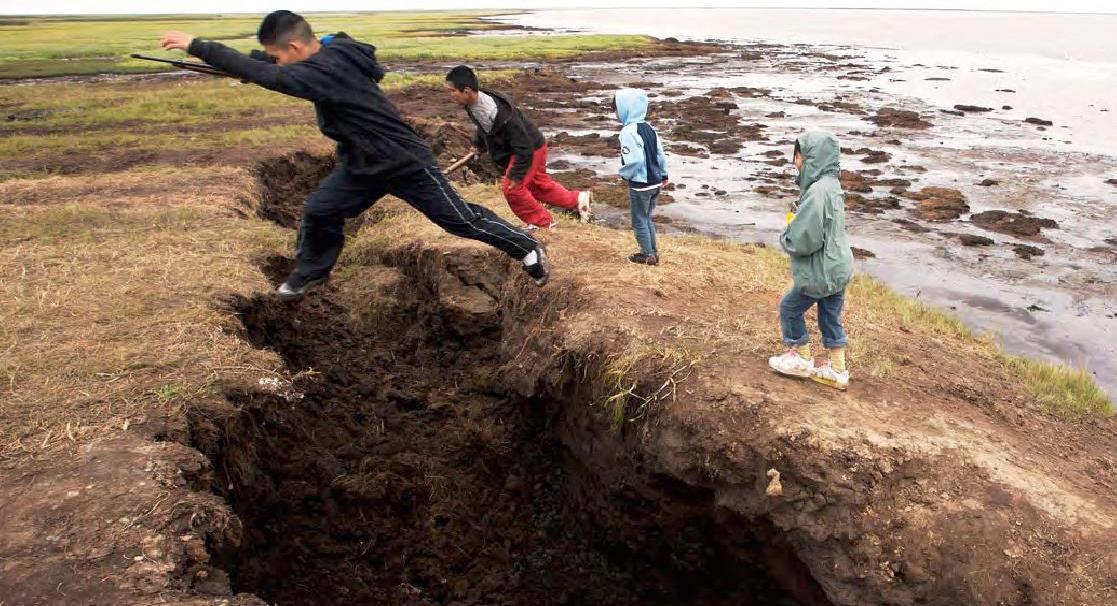Deleting a policy report won’t stop Alaska climate change
OPINION: Alaska's new governor is reversing his predecessors climate efforts. But local governments in Alaska are in a position to step up to the challenge.

It was not a big surprise that the Alaska Department of Environmental Conservation deleted a new climate change report from its website on the day that Gov. Mike Dunleavy took office.
But authors of the Alaska climate change report, who had expected something like this to happen, say their efforts were not in vain and predict there will be ways to keep up the momentum in the years ahead.
In the report released in September, the 21-member group of Alaskans called on the state to undertake the difficult task of balancing the needs of the environment and the need of residents for a “robust economy.”
“There is an economic, ecological and ethical imperative to reduce greenhouse gas emissions and to stop or slow the rate of climate change,” the report said.
The logic behind the state report was bolstered by a chapter in the National Climate Assessment released in late November that said the costs of dealing with climate change are going to impact everyone in Alaska.
“The cost of infrastructure damage from a warming climate is projected to be very large, potentially ranging from $110 to $270 million per year, assuming timely repair and maintenance” in Alaska, the assessment said.
While the scientific evidence for climate change races ahead, Dunleavy’s decision to strip it from the website reveals all you need to know about his politics.
Whether the report and associated documents are returned to the state website or not, the action sends a clear signal that the administration’s priorities lie elsewhere.
“Alaska is not really a smokestack state,” Dunleavy said during his campaign in a debate with former Sen. Mark Begich. “Our contribution to climate change is probably minimal. We need to make sure Alaskans are going to work. We use technology where we can to reduce emissions. But our contribution to climate change to minimal.”
This is the second time that a change of administration in Alaska has prompted the state’s top elected leader to wipe out what has gone before.
Former Gov. Sean Parnell also disavowed the work of a climate change group created by his predecessor, former Gov. Sarah Palin, before she reinvented herself for the national stage.
While those pushing for action on climate change have been disappointed in the state response, two members of the climate action team spoke at a climate change forum in Fairbanks and found reasons for hope.
Nikoosh Carlo, who worked as senior climate advisor under Gov. Bill Walker, suggested that the change of policy in the governor’s office means other Alaska groups will have to step up.
She said there may be a parallel in what happened after the Trump administration announced plans to pull the United States out of the landmark Paris accords to limit greenhouse gas emissions.
“When we saw that happen, states really stood up, took a more leadership role, formed coalitions, really started to take climate action at a state level,” she said.
“We don’t have leadership at a national level and there’s less leadership at a state level. There’s a huge opportunity there for municipalities and local leadership to step in and come up with action plans to think about what it means to be sustainable as a community in Alaska.”
Luke Hopkins, former mayor of the Fairbanks North Star Borough, said that federal agencies have continued to work on climate-related research in rural Alaska under the Trump administration.
Regardless of state politics, he said, all agencies in state government have found themselves dealing with the reality of climate change.
He said Alaskans should request that the governor return the documents to the website. They are public documents that should be available to the public.
Carlo said that regardless of political rhetoric, some aspects of climate change and adaptation are impossible to ignore.
“We do have villages that are facing immediate threats in some very serious situations,:” said Carlo. “That’s not going to go away, it’s going to get to worse.”
“We need to invest the money now in order to not spend a whole lot of money later. And we need to make sure that our communities are safe.”
Larry Hinzman, a vice chancellor for research at the University of Alaska Fairbanks, also took part in the climate change discussion, organized by the Arctic Institute of North America.
He said investing in energy efficiency and conservation are among the policy options that make sense to people of all political views.
“There are a lot of really good recommendations in these documents that any administration can support. I think we need to keep on pushing them forward, they’re just good ideas that need to be done.”
Columnist Dermot Cole lives in Fairbanks and can be reached at de*********@***il.com.
The views expressed here are the writer’s and are not necessarily endorsed by ArcticToday, which welcomes a broad range of viewpoints. To submit a piece for consideration, email commentary (at) arctictoday.com.